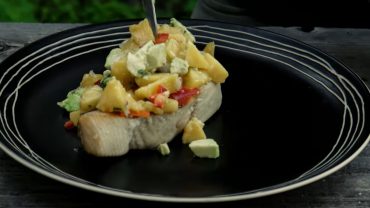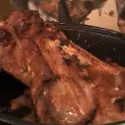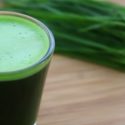How To Cook From Frozen
To Thaw or Not To Thaw – How To Cook From Frozen
Have you ever found yourself pressed for time and wondered how to cook from frozen? If so, this post is about to become your best friend. The good news is that most frozen foods that are still raw, such as fish, meat or vegetables, can be cooked from frozen. Raw frozen foods, however, generally take longer to cook. As such you’ll have to use a lower temperature to allow to defrost it fully. Then raise the heat to allow it to cook through.
When dealing with frozen food, there are a ton of guidelines to follow. these range from thawing to reheating that you will need to be mindful of. Let’s explore a few of these to ensure that the food you prepare from frozen is cooked properly and safe to consume.
Reheating and Thawing Guidelines
Another set of guidelines that we must commit to memory is the concept and rules for properly thawing and reheating your food. Don’t worry, there is not a lot, but learning them will greatly improve the ease of your cooking from frozen journey. So, let’s dive into how to properly thaw frozen food.
Guidelines for Properly Thawing & Reheating Frozen Food:
NEVER:
- Thaw your food by leaving it sitting out at room temperature. Remember the danger zone! When you do this your food will drop to a surface temperature of 40°F before the center of your food even begins to thaw. Once this happens your food will build bacteria and go bad.
- Refreeze thawed foods unless completely cooked before going back into the freezer.
ALWAYS:
- Thaw your frozen meals in the refrigerator ahead of time (generally 24 hours). This will ensure that your food maintains a 40°F temperature or less. This is the preferred method of thawing.
- Thaw under cold running water.
- Be sure that the water remains at 70°F or lower in temperature.
- For prepared meals be sure that no part of your food goes above 40°F.
- Raw fish, poultry, or meat should maintain a surface temperature (the outside of the item) above 40°F while thawing for more than 4 hours.
- Defrost your foods in a microwave or toaster over IF THE FOOD WILL BE SERVED IMMEDIATELY AFTER THAWING. This will also reheat your food so have a thermometer handy to be sure that the center of the dish gets to a safe 160°F before eating.
Freezer & Refrigerator Guidelines
Let’s take a few minutes to discuss food storage guidelines, particularly for your freezer and refrigerator. I’ll be the first to admit that it isn’t the most glamorous part of the Meal Prep process, but it is a vital topic to cover if we want to stay safe from food-borne illness and keep our prepped food from going bad. These guidelines include:
- Never leave food that was once chilled or cooked sitting at general room temperature for longer than two hours. General room temperature is between 40° to 90°F and is considered the ‘danger zone’ for these types of food. When the temperature jumps to over 90°F, the general rule of thumb drops to a maximum time of one hour. The key is to aim to keep hot foods hot and cold foods cold.
- When placing your foods inside your refrigerator, place all your uncooked meats on the bottom shelf and your cooked foods toward the top. This helps to avoid raw meat juices or blood from dripping into your already prepared foods causing cross-contamination. In the same breath, be sure to properly wrap and/or cover your foods before storing them.
- Ensure that the temperature of your refrigerator never goes over 40°F and your freezer remains at least 0°F (the freezing point).
- Consider attaching labels to your containers that you plan to store in the freezer. This could be as simple as a strip of masking tape written on with a permanent marker. This will help you to keep your freezer organized which will also aid in you standing with the freezer door open for a shorter time. By using labels, you will also be able to tag your prepared meals with a ‘Cooked on date’ and a ‘Use by date’. This will lessen the chances you forgetting a meal and it going bad.
What Can Be Cooked From Frozen?
Can Whole Meat Be Cooked From Frozen?
Most meats can, in fact, be cooked directly from the freezer. With meat though, you have to triple-check that the meat has been cooked entirely before serving. Your meat has to get to an internal temperature of 70°C and remain there for at least 2 minutes to kill any harmful bacteria it may be carrying. Following this, you will need to continue cooking until it gets to the recommended temperature for the doneness of the specific meat you are cooking.
Pro-Tip: If planning to cook a cut of meat from frozen, consider cutting it up ahead of freezing. That way your meat will be able to defrost and cook through easier.
Can Minced Meat Be Cooked From Frozen?
Absolutely, is possible and safe to cook your grounded meat straight from the freezer. To do this, simply add your frozen ground meat to a hot skillet at the lowest temperature of your stove and stir while cooking until it begins to separate. Once this happens increase the temperature to medium-high and continue to fry it until it is completely cooked.
Can Bacon Be Cooked From Frozen?
All bacon lovers will be delighted to learn that it is perfectly safe and just as delicious cooked from frozen. Simply, set your slab of bacon in a skillet on low heat until it starts to pull apart. Monitor your bacon. The more the bacon separates, the higher you can increase Gradually increase the heat until fully cooked and crisp.
What many don’t know is that other cuts of pork can also be cooked similarly, as well as, in the oven, or even on the grill. Just remember that your meat will take at least 50% more of the usual cooking time to cook as the first part of the time will be sent defrosting on low heat.
Final Thought
These guidelines behind defrosting, reheating, or cooking food from frozen exist because foods stored in your refrigerator and freezer can last a long time under the right conditions, but they won’t last forever. The rule of thumb for perishable items is to dispose of them after a week if opened and not used. Then when cooking from frozen always begin cooking on low heat.
Related Video
https://www.youtube.com/watc








